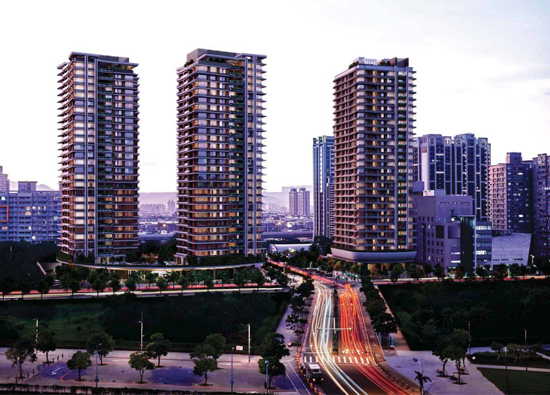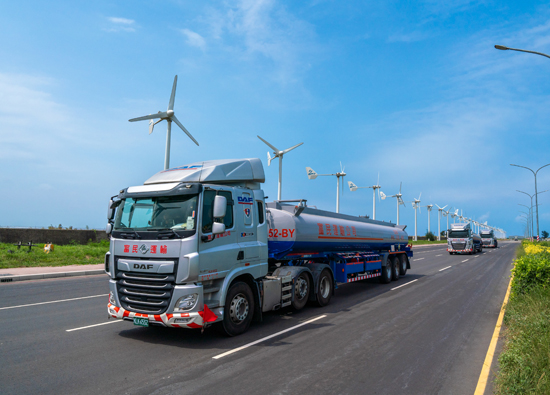07.2024 Cover Story
Leading international regulations U-Ming Marine Transport low-carbon and energy-saving sailing
U-Ming Marine Transport / provided

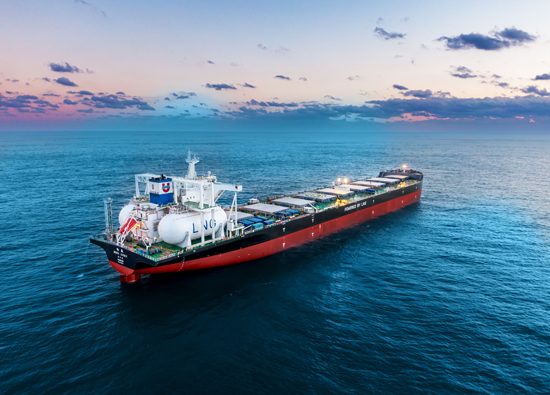
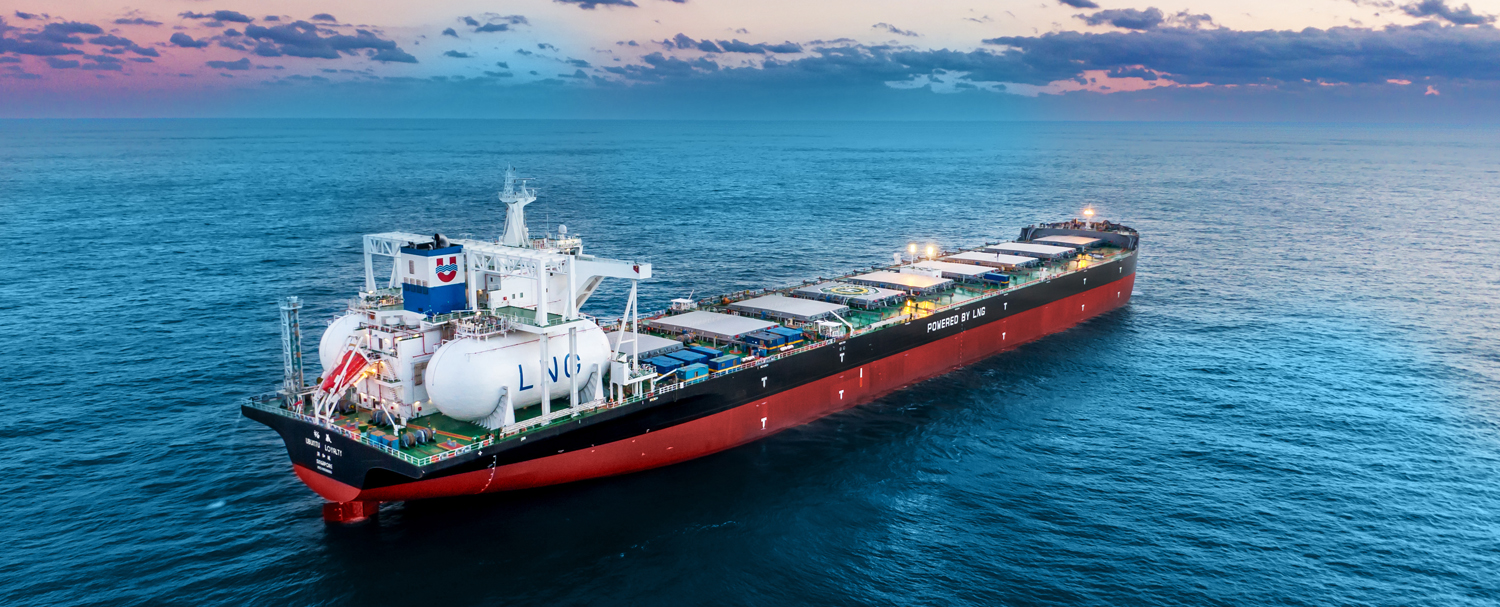 U-Ming Marine Transport is committed to building a globally leading low-carbon and energy-saving fleet, becoming an industry model that balances environmental protection and efficiency. Based on advanced technology and green energy, through systematic planning and continuous innovation, we achieve the ultimate energy-saving and emission reduction effects. Not only do we excel in carbon emissions, but we can also improve transportation efficiency, reduce operating costs, and provide customers with more economical, environmentally friendly, and reliable services.
U-Ming Marine Transport is committed to building a globally leading low-carbon and energy-saving fleet, becoming an industry model that balances environmental protection and efficiency. Based on advanced technology and green energy, through systematic planning and continuous innovation, we achieve the ultimate energy-saving and emission reduction effects. Not only do we excel in carbon emissions, but we can also improve transportation efficiency, reduce operating costs, and provide customers with more economical, environmentally friendly, and reliable services. Continuously eliminating the old and establishing a sustainable fleet
Continuously eliminating the old and establishing a sustainable fleetThe International Maritime Organization (IMO) upgraded the emission reduction regulations for the shipping industry at the 80th session of the Marine Environment Protection Committee (MEPC 80) to "achieve net zero GHG emissions by 2050, and non compliant ships need to slow down or install energy-saving equipment in response.". In order to maintain a competitive advantage in the long term, U-Ming Marine Transport not only regularly replaces old and maintains a younger fleet, but also actively installs rotary sails or carbon capture systems, as well as evaluation studies using bio oil or converting traditional fuel to methanol dual fuel. It is expected to significantly reduce the carbon footprint of the existing fleet. In addition, in addition to transporting traditional bulk cargo, U-Ming Marine Transport also plans to expand into the liquid natural gas (LNG) energy transportation and large offshore wind power operation and maintenance vessel (SOV) markets, expanding its diversified layout while also complying with international environmental policies and customer requirements.
As consumer demand for sustainable products increases, companies are also beginning to demand suppliers to provide lower carbon products and services. For the shipping industry, it means reducing the carbon emissions of ships and providing more transparent carbon emission data. At the same time, governments around the world are gradually formulating stricter carbon emission regulations to address climate change. Therefore, the shipping industry must comply with higher emission standards and invest more funds in technological upgrades. Fortunately, new technologies continue to emerge, providing opportunities for the shipping industry to reduce carbon emissions. For example, new technologies such as electric boats, hydrogen fuel ships, and wind assisted propulsion have broad development prospects.
In view of this, U-Ming Marine Transport is leading the industry in implementing shipbuilding plans. In 2023, a total of 9 environmentally friendly and energy-saving new ships will be launched. The new ships will continue the energy-saving and environmental protection concept of U-Ming Marine Transport, and increase the proportion of intelligent applications. Through ship network management, the speed of troubleshooting will be improved, the failure rate will be reduced, and operational efficiency will be improved, which will help enhance the company's competitive advantage.
Low carbon transformation to improve operational efficiency
U-Ming Marine Transport collaborates with tenants and technology companies to continuously master the updates and research and development of new generation green shipping technologies, including methanol and ammonia fuel ships, and even small marine nuclear powered propulsion ships. Through investment in ship energy-saving retrofitting projects, it updates the engines, propulsion systems, and energy-saving equipment of existing fleets. In addition, renewable energy sources such as wind energy and biomass energy are further adopted to provide power for ships, reduce dependence on traditional fuels, and achieve effective energy utilization and energy conservation and emission reduction. By optimizing the hull structure and design, U-Ming Marine Transport reduces the resistance of ship navigation, improves navigation efficiency, and further reduces energy consumption with advanced energy-saving ship equipment such as energy-saving lighting and intelligent monitoring systems.
At the same time, U-Ming Marine Transport has also established a professional team to enhance the understanding and application ability of crew members towards green shipping technology and energy conservation and emission reduction technology, and to properly plan and utilize talent capital, develop effective career development training plans, cultivate efficient teams, strengthen core competitiveness, combine external resources, continue external layout, seek strategic alliances, actively expand ship leasing business, ship management business, etc., in order to maximize the company's investment returns and diversify operational risks.
U-Ming Marine Transport adheres to an honest and transparent business philosophy, with a safety first and responsible management attitude. It has established long-term and reliable cooperative relationships with world-class miners, steel mills, traders, and shipowners, creating stable and high-quality long-term income. On the other hand, we actively embrace digital thinking, fully initiate enterprise AI transformation, collaborate with partners in the business ecosystem, and develop intelligent ships through cross departmental team cooperation, ensuring a leading position and sustainable business growth in the fiercely competitive market.
Through the above measures, U-Ming Marine Transport will build an efficient, green, and competitive low-carbon and energy-saving fleet, achieve the company's green development goals, and make positive contributions to sustainable development.
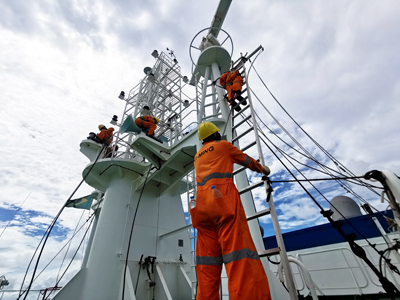 Integrating with the global community to build sustainable waterways
Integrating with the global community to build sustainable waterwaysIn order to provide better transportation services and various types of bulk carriers for customers to choose from, optimize transportation efficiency, reduce carbon emissions, protect the marine environment, and comply with international environmental laws and regulations, U-Ming Marine Transport timely eliminates the old and maintains a youthful fleet. It is expected that 5 new ships will join the operating fleet from 2024 to 2025. In addition, the long-term growth strategy direction of the fleet is also planned, with a dual growth goal of "having a fleet of more than 100 vessels and a total deadweight tonnage exceeding 10 million tons".
U-Ming Marine Transport's self-developed FSM fleet safety management platform (Fleet Safety Management) synchronizes ship operation and meteorological data back to the company's shore for analysis and monitoring through ship networking, conducting efficiency analysis and optimization management. It also introduces Big Data and artificial intelligence technology to predict ship operation status, detect and solve problems in advance, and reduce failure rates and improve operational efficiency. This management platform has not only obtained SMARTShip Notation certification from classification societies such as NK in Japan, DNV in Norway, CR in Taiwan, and BV in France, but also received the Maritime Safety Award from the Maritime Safety Authority of Singapore.
In addition to scaling up ships, reducing fuel consumption and operating costs per unit cargo load, U-Ming Marine Transport also adopts a low-speed navigation strategy for energy conservation and emission reduction. It adopts a narrow streamlined bridge design and optimizes the hull shape to reduce wind and water resistance, further reducing fuel consumption and increasing competitive advantage. At the same time, it continues to improve various safety functions of ships. In cooperation with startups, it uses artificial intelligence and cutting-edge technology to strengthen navigation safety and reduce the risk of ship collisions. In the future, it will also use system automation to monitor the Carbon Intensity (CII) index, continuously improving and optimizing ship efficiency.
The bulk shipping market fluctuates greatly and has obvious business cycle characteristics. U-Ming Marine Transport immediately grasps market information, carefully evaluates market changes, prudently invests, cleverly layout, flexibly switches and allocates the proportion of long and short contracts, and makes appropriate planning for financial and business aspects. Utilizing existing resources and environment, it identifies investment profit opportunities, moves forward step by step, and creates a new situation for the enterprise.
#


